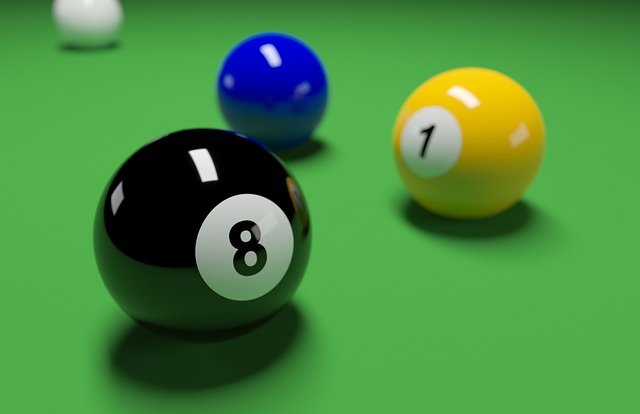Cartoon Mushroom the stories of Cartoons began in the 19th century. Émile Cohl, the French cartoonist, wrote the cartoon in 1908. In the 19th century, In the start, only published cartoon images in newspapers and magazines. When the twentieth century began, cartoons began to appear on Time TV. Cartoon called in a word or a joke anyway. As time went on, the examples of Cotton also changed.
The history of cartoons is such that if someone wants to entertain, he will draw cartoons for it, or any human being will dress up as a cartoon and do tricks to make people laugh, which looks like a cartoon. Punch began in mid-Europe. Began the twentieth century was a lot of cartoon films. Some cartoons are funny, and some are an adventure.
Cartoon Mushroom History
The artists used earlier cartoons only to entertain children on TV. But now many people put cartoons on the faces of political people. Some people criticize because of the movement, and some people do it as entertainment. Original portraits with some humorous and some misleading cartoons.
Gillray Lamping and Caricature He is also called the father of cartoons, and some people use him politically. I used to draw cartoons using the shapes of some such people.
Once upon a time, in New York City, a German drawing was redesigned using cartoons, with about 160 different artistic paintings. About 1900, Tweed’s arrest came to light.
In Britain, it was in the form of a cartoon by Sir John Tunnell. the last week of July, a show was held in France in which a new era of a caricature of political and non-political people began.
Many people make political and non-political cartoons, some are satirical, and some are artistic. Some people enjoy these cartoons, and some people call them bad.
Once upon a time, there was a case of the National Union of Railways whose member JH Thomas sued the Cartoon Party. Explaining his words, J. H. Thomas said that he uses the wrong forms of cartoons which is heartbreaking.
He said that some people do such things to humiliate others. He won the case very well.
Mass Media About Cartoon Mushroom
Nowadays, The Cartoon Mushroom also appear in the form of prints. In 1843 there was using the print media cartoon. In the print media, Artists gave cartoon shapes different colors and designs. The first color print media cartoon in it parodied Westminster, then the great king. The design that Usman did was similar to Mr. Punch’s face.
The purpose of using the title of this cartoon was ironic. What did in life was about Westminster and politicians?
The institutions themselves make some cartoons in various forms to make them famous, sometimes belonging to political people and non-political ones.
In the UK, different names of cartoons are also carried, such as strips Different types of cartoons are made in the world. Some are in the form of pages or series. International Union of the United States and the United States. Some cartoons are serious or critical. As the twentieth century began, cartoons appeared in modern forms, such as animated cartoons. threesome cartoons use human figures
Which, of course, made the video an overnight sensation. Guy Road, the first animated film released in 1990, features cart features
The Start of Cartoon Mushroom is from Comic books
If anything were famous in this world, I would immediately write a book on it. Adventure cartoons created by DC Thompson became very popular in Britain in the 1930s. Experts sent some boys to learn what they wanted to read or write.
Experts found that boys preferred adventure cartoons that appeared in books or the cinema. Adventure cartoons became more popular because of the different types of people in different uniforms.
Cartoon Mushroom Story
The article we are about to write is about a fungus and a drink. Mushroom or Todd is a word that is a fleshy oval fruit, etc. It is simply above the earth’s surface, and when planted, it is edible when ripe.
Therefore, the mushroom law applies to different fungi. Mushrooms with or without stems look like to describe a type of fungus. Some of these are used for meat or fruit body parts. The shapes used for morphology have many different names.
Cartoon Mushroom Etymology
Word began to mushroom in the 15th or 16th centuries, and follows some different names have been listed more. Museum. Or may run etc. The mushroom descriptions and the second word toadstool have been around for centuries.
There is no consensus among them. The word toadstool was first used in Britain to refer to toads and stools dating back to the 14th century. The fungus used in it is a highly toxic and edible gas.
Cartoon Identification and History
Relating mushrooms requires an introductory understanding of their macroscopic structure. Utmost care Basidiomycetes and gilled. Their spores, called basidiospores, are produced on the gills and fall in a fine rain of grease paint from under the caps. The basidiospores are shot off basidia at the bitsy position and fall between the gills in the dead air space. As a result, for utmost mushrooms.
If the cap is cut off and placed gill-side-down overnight, a fine print reflecting the shape of the gills (or pores, or backbones,e, etc. is formed (when the fruit body is sporulating). The color of the fine print, called a spore print, is used to help classify mushrooms and can help to identify them. Spore print colors include white (most common), brown, black, grandiloquent-brown, pink, unheroic, and delicate, but nearly noway blue, green, or red.
While ultramodern identification of mushrooms is snappily getting molecular, the standard styles for identification are still used by utmost. They have developed into a fine art hearkening back to medieval times and the Puritanical period, combined with the bitsy examination.
Amateur and professional mycologists consider the presence of authorities upon breaking, bruising responses, odors, tastes, tones of color, niche, habit, and season. Tasting and smelling mushrooms carry their hazards because of venoms and allergens.
Cartoon Mushroom Classification
Typical mushrooms are the fruit bodies of members of the order Agaricales, whose type rubric is Agaricus and type species is the field mushroom, Agaricus campestris. Still, in ultramodern molecularly defined groups, not all members of the order Agaricales produce mushroom fruit bodies, and numerous other gilled fungi, inclusively called mushrooms.
do in other orders of the class Agaricomycetes. For illustration, chanterelles are in the Cantharellales, false chanterelles similar to Gomphus are in the Gomphales, milk-cap mushrooms (Lactarius, Lactifluus) and russulas (Russula).
as well as Lentinellus, are in the Russulales, while the tough, tough rubrics Lentinus and Panus are among the Polyporales. Still, Neolentinus is in the Gloeophyllales, and the little leg-mushroom rubric, Rickenella, and analogous rubrics are in the Hymenochaetales.
Therefore, the term is more of a common operation to macroscopic fungal fruiting bodies than one with precise taxonomic meaning.
Internal Structure of Cartoon Mushroom
The primordium enlarges into a roundish structure of simple hyphae, roughly suggesting an egg called a” button.” The button has a cottony roll of mycelium,
The universal robe, surrounding the developing fruit body. As the egg expands, the universal robe ruptures and may remain as a mug, or volva, at the base of the stalk or as knobs patches on the cap. Numerous mushrooms warrant a universal robe.
Thus they don’t have volva or vulval patches moreover. An alternate subcaste of the towel, the partial robe, frequently covers the jagged gills that bear spores.
As the cap expands, the robe breaks, and remnants of the partial robe may remain as a ring, or annulus, around the middle of the stalk or as fractions hanging from the periphery of the cap. The ring may be skirt-like as in some species of Amanita.
Collar-like as in numerous species of Lepiota, or simply the faint remnants of a cortina (a partial robe composed of fibers suggesting a spiderweb) is typical of the rubric Cortinarius. Mushrooms lacking partial curtains don’t form an annulus.
Cartoon Mushroom Revolution
The stalk ( also called the stipe or stem) may be central and support the cap in the middle, or it may be off-center and side, as in species of Pleurotus and Panus. A stalk may be absent in other mushrooms.
As in the polypores that form shelf-suchlike classes. Puffballs warrant a stalk but may have a supporting base. Like truffles, jellies, earthstars, and raspberry’s nests, other mushrooms generally don’t have stalks, and a technical mycological vocabulary exists to describe their corridor.
The gills attached to the stalk’s top are an important point of mushroom morphology. Mushrooms in the rubrics Agaricus, Amanita, Lepiota, and Pluteus, among others, have free gills that don’t extend to the top of the stalk. Others have decurrent gills that extend down the stalk, as in the rubrics Omphalotus and Pleurotus.
There are many variations between the axes of free and decurrent, inclusively called attached gills. notched gills.
These distinctions between attached gills are occasionally subtle since gill attachment may change as the mushroom matures or under different environmental conditions.
Feature of Cartoon Mushroom
A hymenium is a subcaste of bitsy spore-bearing cells that cover the face of gills. In the nongilled mushrooms, the hymenium lines the inner shells of the tubes of boletes and polypores or covers the teeth of chine fungi and the branches of corals.
In the Ascomycota, spores develop within bitsy stretched, sac-suchlike cells called asci, which generally contain eight spores in each ascus. The Discomycetes, which contain the mug, sponger, brain, and some club-suchlike fungi, develop an exposed subcaste of asci, as on the inner shells of mug fungi or within the recesses of morels.
The Pyrenomycetes, bitsy dark-multicolored fungi that live on a wide range of substrates, including soil, soil, splint waste, decaying wood, and other fungi, produce nanosecond, beaker-shaped structures called perithecia, within which the asci develop.






